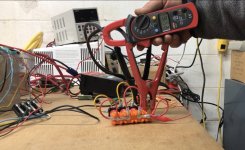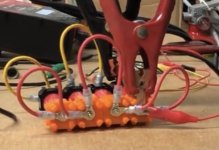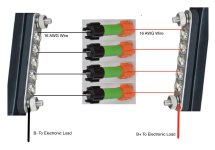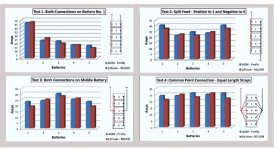BlueSeas
100 W
john61ct said:I actually want to "productize" a generic current limiter for exactly that use case
plugging large depleted sub-packs back into the Full "mother bank" in parallel.
My second example would work. A length of wire in series will act as a current limiter. Or a power resistor on a good heat sink. There might be a better way, think some of the "mother banks" power heats the wire or resistor never making it to the sub pack.
There is a device that does exactly that, but only for up to 8P packs or 32V max input. It's a called a PowerLab.
http://www.usastore.revolectrix.com/Products_2/Cellpro-Series-Chargers-and-Battery-Workstations
This is what I use for cell testing with a PC interface. It works both directions, you can charge a test pack from the input supply, and if the input is a battery, you then can turn around and discharge the newly charged pack back into the battery.
It logs the data and natively produces graphs like this one:
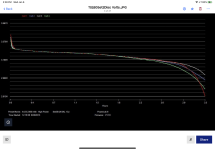
The logs can be transferred to Excel for custom graphs, like this one:
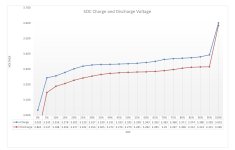
That one has data from a full constant rate charge and discharge cycle. Not sure what the rate was on this sample, probably .2 or .3C But is was the same throughout. I was attempting to devise an algorithm for my homegrown BMS to approximate SOC based on real-time Voltage and Current measurements. The BMS worked, but this SOC calculation never did. I also had a Coulomb counter based SOC, it was far more accurate.


